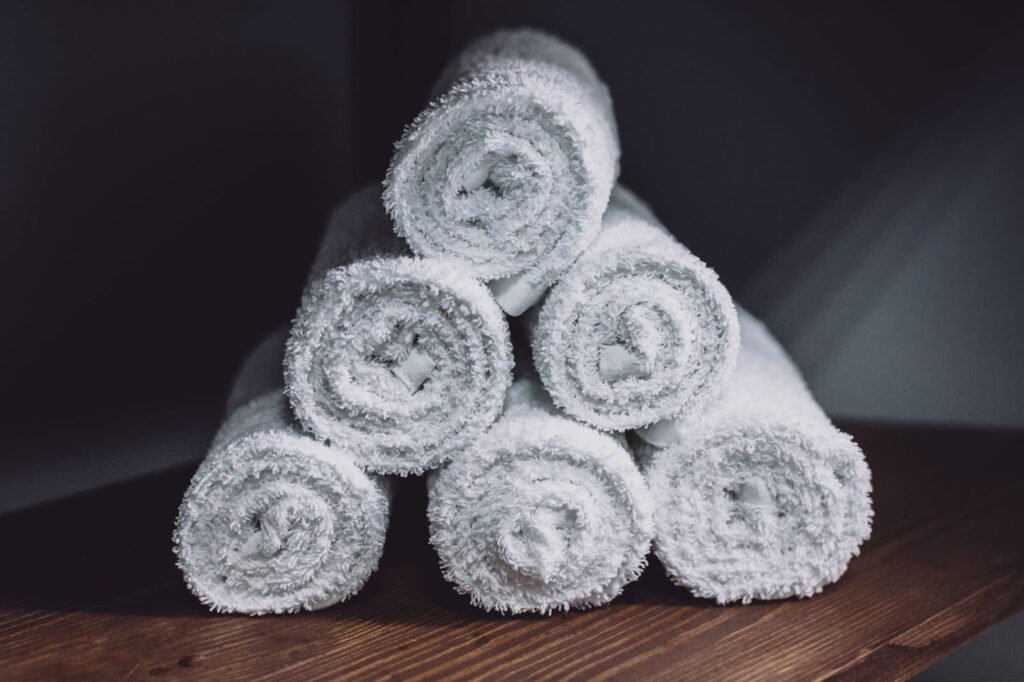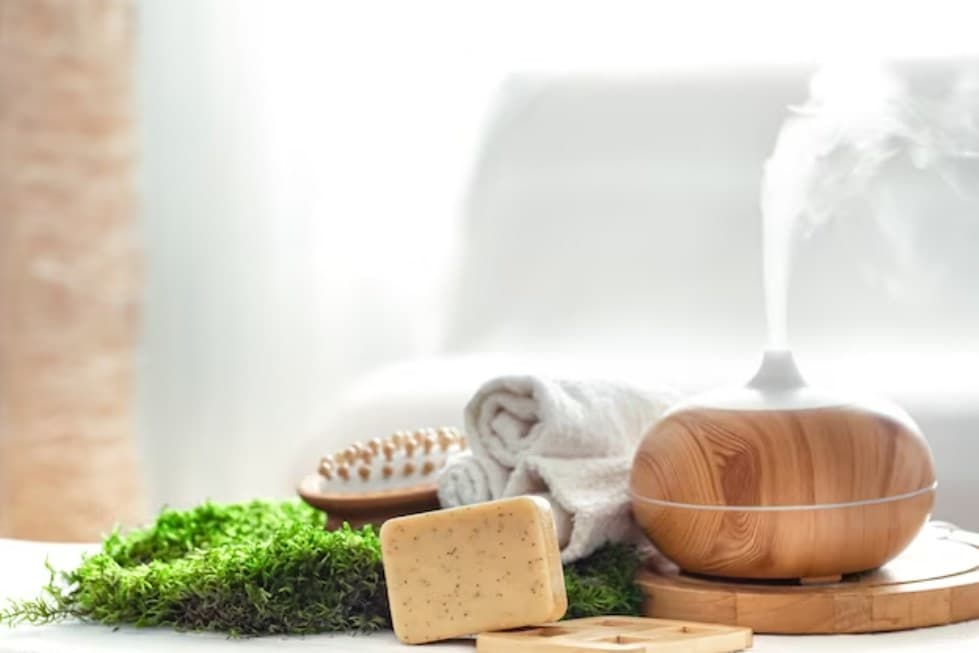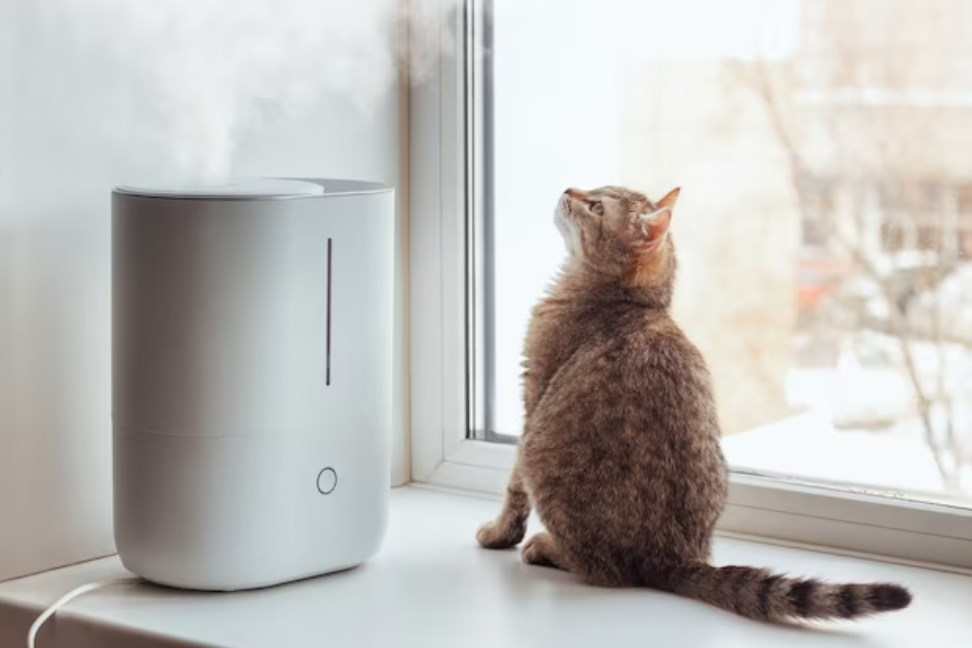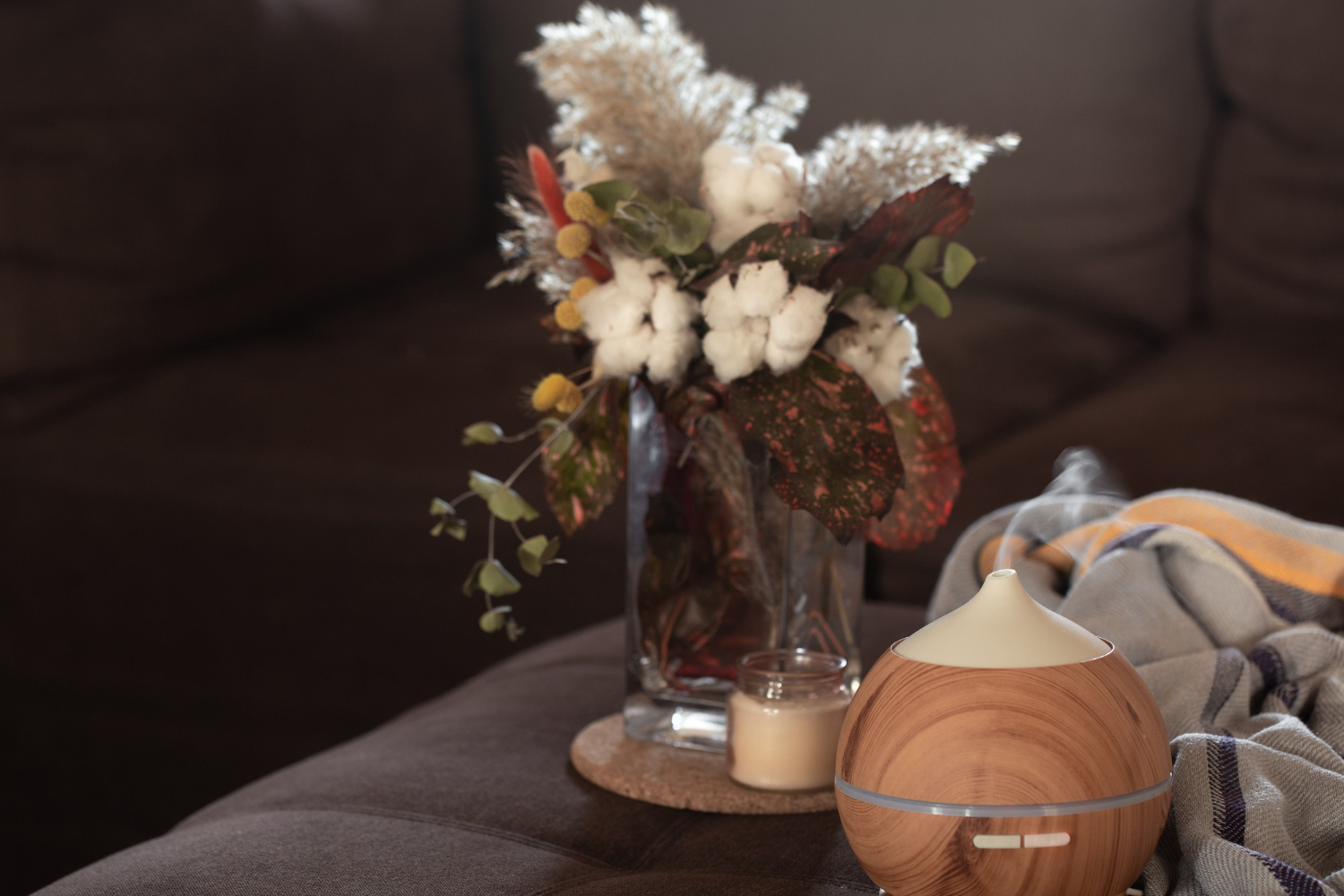Are you struggling with dry air in your home? Low humidity levels can lead to various discomforts, such as dry skin, irritated sinuses, and even respiratory issues. Maintaining proper humidity levels is essential for a healthy and comfortable living environment. While investing in a humidifier is a popular option, there are also natural and low-cost methods to increase humidity in a room.
In this comprehensive guide, we will explore the best techniques that will help you add moisture to dry air and boost humidity levels without breaking the bank. From easy DIY tricks to selecting the right humidifier, get ready to transform your living space into a cozy and well-balanced oasis.
Harness the Power of Houseplants
Houseplants not only add beauty and freshness to your living space but can also serve as natural humidifiers. Through a process called transpiration, plants release moisture from their leaves into the surrounding air, effectively increasing humidity levels.
By strategically selecting and placing specific types of houseplants in your home, you can create a more humid and comfortable environment.
- Aloe Vera: Apart from its renowned healing properties, Aloe Vera is an excellent choice for boosting humidity. This succulent plant emits moisture, making it an effective natural humidifier. Place an Aloe Vera plant in a well-lit area of your home, preferably near a sunny window. The succulent leaves of Aloe Vera will steadily release moisture into the air, increasing humidity levels. It is important to water the plant regularly to ensure its health and continuous moisture release;
- Boston Fern: Known for its elegant and leafy appearance, the Boston Fern is a fantastic option for humidifying a room. This plant has high transpiration rates, meaning it releases a significant amount of moisture into the surrounding air. The Boston Fern thrives in indirect light and prefers cooler temperatures, making it an ideal choice for areas such as bathrooms or kitchens. To maximize its humidifying effect, consider misting the fern’s fronds with water occasionally. This practice simulates a humid environment and enhances its ability to increase humidity levels;
- Spider Plant: The Spider Plant, also known as Chlorophytum comosum, is another popular choice for adding moisture to the air. This resilient plant features long, arching leaves and produces small plantlets or “spiders” that dangle from the main plant. Spider Plants are known for their ability to purify the air by removing toxins and releasing oxygen, and they also contribute to increased humidity levels through transpiration. Place Spider Plants in well-lit areas of your home and water them regularly to ensure optimal growth and moisture release;
- English Ivy: English Ivy, scientifically known as Hedera helix, is a versatile plant that can thrive both indoors and outdoors. It features cascading vines with rich, green foliage. English Ivy not only adds aesthetic appeal to your home but also contributes to increased humidity. This plant performs best in moderate light conditions and prefers slightly cooler temperatures. Regularly misting the leaves or placing a tray of water near the plant can enhance its humidifying effect;
- Peace Lily: The Peace Lily, or Spathiphyllum, is a beautiful and popular houseplant known for its elegant white flowers and glossy green leaves. Besides its aesthetic value, the Peace Lily also acts as a natural humidifier. It has the ability to transpire a significant amount of moisture into the air, thereby increasing humidity levels in the room. Place Peace Lilies in well-lit areas away from direct sunlight and keep the soil consistently moist to optimize their humidifying capabilities.
By incorporating moisture-emitting houseplants like Aloe Vera, Boston Fern, Spider Plant, English Ivy, and Peace Lily into well-lit areas of your home, you can harness their natural humidifying properties. These plants not only enhance the aesthetics of your living space but also contribute to creating a healthier and more comfortable environment by increasing humidity levels.
Remember to care for your houseplants by providing them with proper watering, light, and occasional misting to ensure their optimal growth and humidity-boosting benefits.
Utilize Water Sources Strategically
Strategic use of water sources can significantly impact the humidity in a room. By employing these simple techniques, you can naturally increase moisture levels without spending a dime.
Water Basins
Placing shallow water basins strategically near heat sources in your home, such as radiators or vents, can have a significant impact on increasing humidity levels. As the heat warms the water, it will gradually evaporate, introducing moisture into the surrounding air.
The evaporated water acts as a natural humidifier, adding much-needed moisture to combat dryness. For an extra touch of aromatic ambiance, consider adding a few drops of your favorite essential oil to the water. The pleasant fragrance will disperse throughout the room, enhancing the overall experience.

Damp Towels
Another simple yet effective technique to naturally increase humidity is to hang damp towels or clothing in the room. As the water evaporates from the fabric, it releases moisture into the air, elevating the humidity levels. This method is particularly useful in dry climates or during colder seasons when indoor air tends to be drier.
To expedite the evaporation process, you can hang the damp towels near a fan or open a window. The circulating air will facilitate faster evaporation, effectively increasing humidity in the room.
Strategic utilization of water sources is a cost-effective and straightforward way to add moisture to the air and create a more comfortable living environment. By implementing water basins near heat sources and hanging damp towels, you can achieve a desirable level of humidity without relying solely on expensive equipment.
Optimize Your Shower Routine
Taking advantage of your daily shower routine is an effective way to increase humidity in your home.
Keep the Bathroom Door Open
Maximizing the benefits of your shower routine is as simple as leaving the bathroom door open after a warm shower. As you shower, the hot water creates steam, which fills the bathroom with moisture. Allowing the steam to escape and spread throughout your home by leaving the door open enables the air to absorb the moisture, increasing humidity levels. This technique is particularly effective in smaller homes or apartments where the steam can quickly permeate the living spaces.

Use a Humidifier During Showers
Taking your shower routine a step further, you can enhance the moisture content in the air by placing a small humidifier in the bathroom while you shower. The humidifier will work in tandem with the steam generated by the shower, ensuring a consistent level of humidity throughout the room.
This combination helps combat excess dryness and provides a more comfortable and enjoyable shower experience. It is important to follow the manufacturer’s instructions for your specific humidifier model to ensure safe and efficient operation.
Optimizing your shower routine not only promotes personal hygiene but also serves as an effective way to increase humidity levels in your home. By keeping the bathroom door open and utilizing a humidifier during showers, you can harness the steam and moisture generated to create a more humid and comfortable living space.
Remember, maintaining a balanced level is key, and it’s essential to monitor and adjust accordingly to prevent excess moisture or dryness. By implementing these techniques, you can transform your daily shower into a natural humidity-boosting ritual, promoting a healthier and more pleasant atmosphere in your home.
Choose the Right Humidifier
Investing in a quality humidifier can provide a consistent and controlled humidity level in your home. When selecting a humidifier, consider the following factors:
Room Size
When selecting a humidifier, it is crucial to consider the size of the room you intend to humidify. Determining the square footage of the room will help you choose the appropriate humidifier size that can effectively increase humidity levels.
A larger room typically requires a larger humidifier unit to adequately distribute moisture throughout the space. The size of the humidifier is directly related to its capacity to generate and disperse moisture effectively.
By matching the humidifier’s capacity to the room size, you can ensure optimal performance and maintain a comfortable level in your living or working environment. It is important to note that using an undersized humidifier for a larger room may result in insufficient moisture output, while an oversized humidifier for a smaller room may lead to excessive humidity levels.
To determine the square footage of your room, measure the length and width of the space and multiply the two measurements. Once you have the room’s square footage, refer to the humidifier manufacturer’s guidelines or consult with a professional to select a humidifier that suits your room size. Taking this step will help you achieve the desired balance and create a pleasant and healthy indoor atmosphere.

Type of Humidifier
There are various types of humidifiers, each with its advantages and considerations. Consider the following options:
- Evaporative Humidifiers: These humidifiers use a fan to blow air over a wick or filter soaked in water, releasing moisture into the air. They are energy-efficient and suitable for larger rooms;
- Ultrasonic Humidifiers: These humidifiers produce a cool mist using ultrasonic vibrations. They are generally quieter and more suitable for smaller spaces;
- Warm Mist Humidifiers: These humidifiers produce a warm mist by heating water and releasing it into the air. They can provide soothing relief for respiratory issues but require regular cleaning.
Maintenance
Look for a humidifier with easy maintenance and cleaning procedures to ensure long-term usability and efficiency. Regular cleaning and filter replacement will prevent the buildup of mold and bacteria.
Choosing the right humidifier is crucial for maintaining optimal humidity levels in your home. Consider factors such as room size, humidifier type, and maintenance requirements when making your selection. A well-suited humidifier will ensure consistent humidity levels and contribute to a healthier living environment.
Final Thoughts
Increasing humidity levels in your home doesn’t have to be a challenge or an expensive endeavor. By harnessing the power of houseplants, utilizing water sources strategically, optimizing your shower routine, and investing in the right humidifier, you can create a comfortable and well-balanced environment.
However, it’s important to keep a few final considerations in mind:
- Monitor Humidity Levels: Use a hygrometer to regularly monitor the levels of humidity in your home. The ideal range for indoors is typically between 40% and 60%. This will help you maintain a healthy and comfortable environment while avoiding excessive moisture or dryness;
- Avoid Over-Humidification: While increasing humidity is beneficial, be cautious not to over-humidify your home. Excess moisture can lead to mold and mildew growth, which can cause respiratory issues and damage to your property. If you notice condensation on windows or walls, reduce the level accordingly;
- Maintain Cleanliness: Proper maintenance and cleanliness are essential when utilizing methods such as water basins, humidifiers, and damp towels. Regularly clean and change the water in basins, follow the cleaning instructions for your humidifier, and ensure that damp towels are clean and replaced when necessary. This will prevent the growth of bacteria or mold;
- Consider Individual Needs: Everyone’s comfort levels may vary, and certain individuals, such as those with respiratory conditions or allergies, may have specific requirements. Adjust the levels and methods based on individual needs and preferences;
- Seasonal Adjustments: Your needs may vary depending on the season. In dry winter months, you may need to increase the level more frequently, while in humid summers, you may need to be cautious about excessive moisture. Adapt your methods accordingly to maintain a balanced and comfortable atmosphere.
By incorporating these considerations into your approach, you can ensure that increasing humidity in your home remains a safe and beneficial process. Enjoy the benefits of improved air quality, reduced dryness, and a healthier living space. Say goodbye to dry air discomfort and embrace a more harmonious atmosphere in your home.
Methods to Increase Humidity at Home
| Method | Brief Description |
|---|---|
| Houseplants | Certain houseplants, such as Aloe Vera and Boston Fern, release moisture through transpiration. |
| Water Basins | Placing shallow water basins near heat sources allows water to evaporate and increases humidity levels. |
| Damp Towels | Hanging damp towels or clothing promotes evaporation, adding moisture to the air. |
| Optimize Showers | Leaving the bathroom door open during showers spreads steam throughout the house, increasing humidity. |
| Use a Humidifier | Investing in a suitable humidifier provides consistent control over humidity levels in your home. |
| Boiling Water | Boiling water on the stove or using a kettle releases steam into the air, increasing humidity levels. |
| Ventilation Control | Adjusting ventilation systems or closing off vents in dry areas can help retain moisture in the air. |
| Wet Sponges | Placing wet sponges near heat sources or on radiator surfaces increases evaporation and humidity. |
| Baking | Baking or cooking with uncovered pots or pans allows steam to escape into the surrounding environment. |
| Fountain or Aquarium | Installing a fountain or maintaining an aquarium can add moisture to the air through evaporation. |
Note: It’s important to monitor humidity levels regularly and maintain a balance, as excessively high humidity can lead to other issues, such as mold growth.
Conclusion
Maintaining proper humidity levels in your home is crucial for your well-being and comfort. By implementing the natural and low-cost methods discussed in this guide, you can effectively increase humidity and create a more pleasant living environment.
Harness the power of houseplants, strategically utilize water sources, optimize your shower routine, and choose the right humidifier to enjoy the benefits of improved air quality and reduced dryness. With these techniques, you can transform your home into a harmonious oasis of moisture and create a healthier living space for you and your family.


